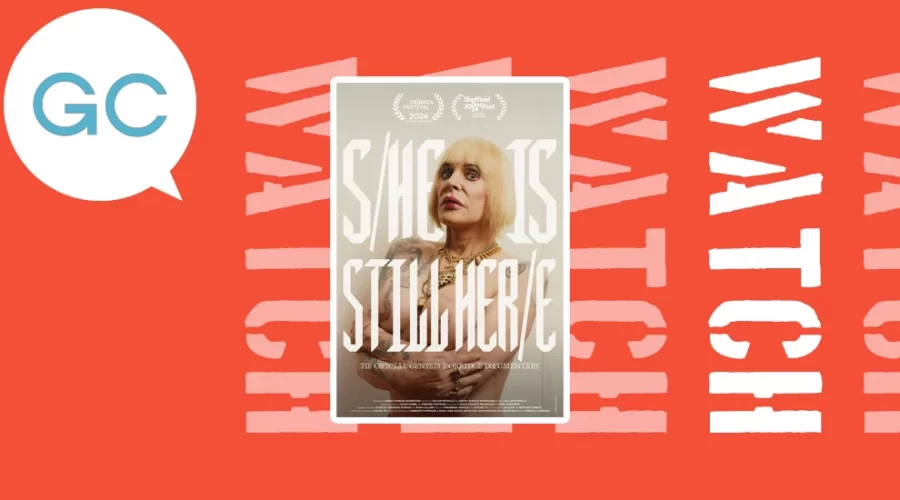Even if you’re not familiar with the experimental art/music groups Throbbing Gristle or Psychic TV, the synopsis for David Charles Rodrigues’s S/He is Still Her/e – The Official Genesis P-Orridge Documentary makes a one of a kind case for viewing: “Featuring William Burroughs, Brion Gyson, Timothy Leary, Alice Genese (Psychic TV), David J (Bauhaus/Love and Rockets), Nepalese monks, African witch doctors, and a special cameo by Her Majesty Queen Elizabeth.”
Indeed, the film – which debuted at last year’s Tribeca Festival before hopping the pond to Sheffield DocFest – centers around an equally unique protagonist, the titular gender binary-bashing artist and musician; who also happened to be the star (along with their performance artist partner Lady Jaye Breyer P-Orridge) of Marie Losier’s The Ballad of Genesis and Lady Jaye.
But unlike that 2011 doc, which focused almost exclusively on a single one of the shapeshifter’s many lives, Rodrigues (Gay Chorus Deep South) takes a far more expansive approach – right down to including P-Orridge’s very loving relationship with their now adult daughters.
Which comes as a bit of a surprise considering the self-styled outlaw – who believed that “there’s always a thin line between jail and creativity” – would not necessarily seem suited to doting parenthood.
But then “Gen” always defied expectations, likewise believing that an artist can “suggest new ways of seeing things you took for granted before.” And also that they’re “looking for what we often call the truth – but nobody even knows if there is a truth. It could well be that we’re just supposed to look.”
Though Rodrigues for his part didn’t have to look far, having gained the trust of his hero/ine before the two even met. According to the director, a few months prior to connecting Gen appeared to him in a dream to say, “Darling I am transferring all of my knowledge to you, right now.’”
What soon followed was a 45-minute-turned-12-hour encounter at their home, a year of filming (Gen’s last here on earth), and ultimately unlimited access to the Genesis estate archives; which Rodrigues and editor Dillon Petrillo make inventive use of, seemingly having been inspired by the cut-up technique of Gen’s mentor Brion Gysin as well.
And though gay subversives like Gysin were certainly a key influence for Gen, the pioneering iconoclast was actually less interested in earthly concerns like sexuality or gender – or even reaching beyond the gender binary – than with pushing beyond the body itself. Which is perhaps why s/he found more in common with a straight guy like Timothy Leary than with, say, the radicalized queers on the frontlines of the AIDS crisis during the Psychic TV heyday.
Indeed, it’s almost as if Gen lived in a cloistered universe throughout the 80s, the epidemic raging in the art community looming like an elephant offscreen.
Which admittedly, is probably less troubling than former bandmate Cosey Fanni Tutti’s longstanding claim that Gen was abusive during their relationship. Artists are complicated and truth is in the eye of the beholder. All we can do is look.

